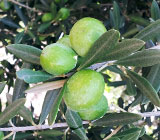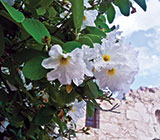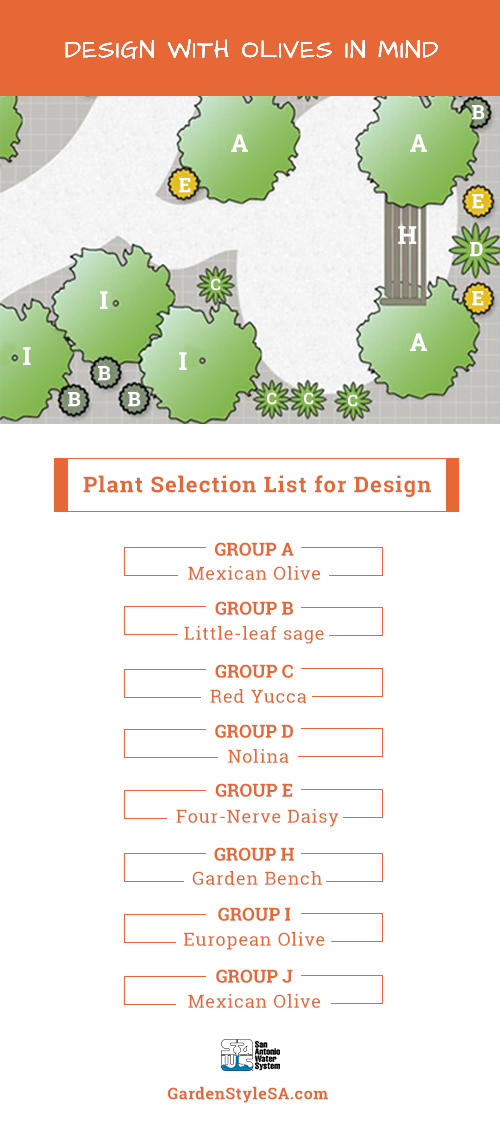Both Mexican and European olives are xeric plants and both can tolerate heat and drought.
Mexican and European olive are xeric plants and both are included in the fall WaterSaver Landscape Coupon. Although they share a name, along with small greenish fruits and bicolored green-and-white leaves, they aren’t closely related. But either olive can be easily paired with agaves, yucca, or sago palm to add a strong evergreen foundation to new landscaping.
European olive

In recent years olive has been extensively planted as an ornamental in south-central Texas, due to its fine bluish foliage and its drought-hardy evergreen habit. Many varieties are available, from the big ‘Mission’ olive (up to 20 feet) to ‘Little Ollie (a dwarf variety that can be easily mistaken for boxwood.) For SAWS customers implementing the WaterSaver Landscape Coupon, ‘Arbequina’ has been a popular choice, as it’s widely available — and can be spaced close enough to fit two trees into a single landscape bed.
European olive attracts a lot of interest when customers realize it can be grown in Texas. Although the olive industry is a relatively recent phenomenon (few locations in Texas provide the cold weather needed for reliable fruit production) local olive orchards have become popular destinations for customers interested in learning about olives and growing their own.
Though it can be grown in tough conditions, European olive is probably best suited to deeper soils, as long as they’re well drained; in heavy clay soils and on rocky outcrops it may require soil amendment.
Mexican olive

Gardeners with a little more room may forgo the opportunity for fruit production and use Mexican olive instead. Early Spanish explorers found the big leaves and abundant white flowers of Cordia ubiquitous in Tamaulipas and northeastern Mexico, and named it after olive due to the superficial similarity of the fruit. Like comfrey and other forget-me-nots, its leaves are covered with tiny hairs, making them appear fuzzy – a classic adaptive strategy for many desert plants, protecting the leaf surface from drying winds. (In extreme drought, the leaves tend to curl up.)
An unwatered Mexican olive shades the front corner of the Alamo in San Antonio, providing a measure of the capabilities of this subtropical tree, and an informal yardstick of recent winter weather. Even at this protected location, receiving the reflected heat of a south-facing stone wall in winter, it froze to the ground twice in the 1980’s – a useful reminder especially for anyone thinking of using it north of San Antonio. Fortunately, even after extreme freeze damage, Mexican olive will regrow from the ground.
The plant is also called Texas olive, but in reality, in Texas, it grows in the wild only in a fairly narrow strip along the Mexican border. However, transplants can be expected to comfortably grow to tree size as far north as San Antonio and even Austin. With big evergreen leaves and big white flowers, it’s been touted as a clever substitute for Southern magnolia at this drought-prone end of the Texas landscape.



